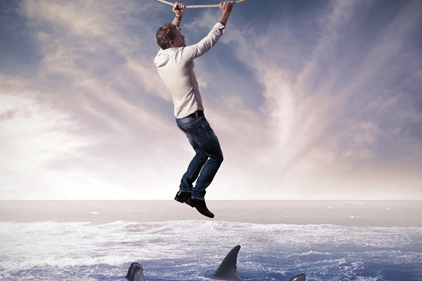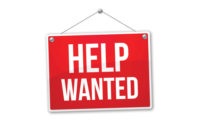Someone in Hollywood thought up “Safety Last” about 90 years ago, by the way. It was the title of a 1923 silent movie, even back then a play on the sham slogan “Safety First.” In “Safety Last,” a mild-mannered man in a low-paying job risks climbing a 12-story building to win a $1,000 prize and win over his girl.
A little at-risk behavior has always been a box office draw, right?
Fortunate exceptions
To be sure, there are enough exceptions to keep the faith that, as Scott Geller says, people actively care. Or else the American Society of Safety Engineers would not have 36,000 members, the American Industrial Hygiene Association 10,000+ members and the Voluntary Protection Program 2,295 worksites. There wouldn’t be numerous thriving annual state workplace safety trade shows and safety consultant user conferences. There wouldn’t be the National Safety Council’s Campbell Institute, with its cutting-edge programming and worldwide corporate members. ORCHSE Strategies in Washington, DC wouldn’t have quarterly meetings with 100+ member companies attending.
No, it’s not all doom and gloom. But some hard questions must be confronted.
How are safety and health professionals to be valued-added business leaders holding the highest positions in organizations, as described by Trish Ennis, currently serving as ASSE’s 100th president, when safety doesn’t make the cut on the list of risks being discussed and addressed in most American boardrooms?
According to a March 2014 survey by the law firm of EisnerAmper LLP of directors serving on the boards of more than 250 publicly-traded, private, not-for-profit, and private equity-owned companies, threats to reputation are the number one concern (see GM and BP as recent examples); followed by cybersecurity/IT risks, concern about CEO succession; and compliance with health care reform, accounting and tax standards. Only 11 percent of boards surveyed are “very concerned” about environmental compliance, with 28 percent “not concerned.” Workplace safety standards did not make the list of choices, but if the much more heavily-penalized and publicized enviro regs elicit so little concern, what does that say about boards’ attitudes toward safety risks?
One clue: less than 40 percent of survey respondents indicated that their companies have a comprehensive enterprise risk management program, and 22 percent don’t even have a program. This presents a daunting leadership challenge for safety and health pros aspiring to the highest positions in organizations.
The lowlights
This survey of company boards of directors is one of the lowlights in what you might call safety’s year of discontent. Consider the following:
•Item: Front-page headline from the July 16 New York Times: “Documents Show G.M. Kept Silent on Fatal Crashes.”
•Item: Also from the July 16 New York Times, “The social contract between workers and employers has changed since WW2. The belief now, says the executive director of the Drucker Institute, is ‘the imperative to make the shareholder king.’ Today, about 60 percent of executive compensation is tied to stock options and the like. No wonder executive motivation is to boost their company’s share price. ‘I don’t think we would get very far in addressing large societal concerns (like workplace safety) if we left them to corporations,’ said Margaret Blair of Vanderbilt Law School. ‘The ethic of shareholder value is just too strong…’”
•Item: From the recent World Cup of football (only in the U.S. is it called soccer) players are shown in slow-motion replay knocking skulls while leaping to head balls, suffering possible concussions. As in American tackle football, the goal is to keep playing. At the World Cup, no independent medical evaluations were performed on dazed players on the sidelines. In the World Cup finale, a German player who was knocked woozy and was obviously glazed and confused, came back in, only to collapse again and be carried off for good on a stretcher. After the game, he said he didn’t remember returning to the field.
• Item: From the July 11 press conference with the director of the Centers for Disease Control and Prevention, Dr. Tom Frieden, after several potentially serious safety lapses (finally) came to his attention: Almost all of his words are uttered in the reactionary past tense: “I’m disappointed by what happened.” “I’ve issued a moratorium…” “I’ve directed… disciplinary action be taken…” “I’ve appointed… a laboratory safety director…” “These are wake up calls.”
When safety is a wake-up call, people have been snoozing. Safety is evidently not keeping them up at night.
• Item: On April 18, an avalanche on Mount Everest killed 13 people and left three missing. The victims were making preparations for a planned live televised jump from the summit of Everest by climber Joby Ogwyn, who would presumably sail down 29,000+ feet in a wing suit, also known as a birdman suit, a flying squirrel suit, or a bat suit. So we have Batman on Everest. What a stunt. Millions would have tuned in, half expecting to see a live televised death spiral.
• Item: On February 20 during a camera test for the film, “Midnight Rider,” (a new biopic of rocker Gregg Allman) a freight train slammed into the production crew on a narrow railroad trestle bridge in rural Georgia, taking the life of a 27-year old second camera assistant and injuring six other crew members, one of them seriously. Within days the Hollywood Reporter wrote of “recriminations of shockingly lax safety protocols.”
Wake-up calls all around
Football (as in soccer) experts say the sport’s world governing body needs a wake-up call about the seriousness of concussions. G.M. needs a wake-up call on transparency. “Midnight rider” filmmakers needed a wake-up call on safety protocols.
We’re exposed 24/7 to forces — society, the media, the business world, contact sports and show business – that too often reinforce “safety last.” From Harry Houdini to silent film comics like Buster Keaton and Harold Lloyd (who famously hung by a clock needle atop that 12-story building in “Safety Last”) to the Three Stooges to Evel Knievel, we’ve been entertained by people who willingly put safety last.
What’s the draw? It’s like the rubbernecking that clogs highways as autos crawl by to stare at a roadside crash.
Perhaps we need a mass populace wake-up call.
The problem with safety wake-up calls is you usually discover people have been killed or maimed while you were asleep. Then you come to your senses (at least for a while) and say “never again.” This reality is another daunting challenge for the safety and health professions.
“Safety last” most likely persists thanks to attention deficits, machismo, complacency, greed and the lure of taking a gamble. It’s the bane of safety and health pros. As in the old “Mission Impossible” TV show intro: “Your mission, should you choose to accept it” is to battle the cold and unfortunate reality that too often it’s safety last.



